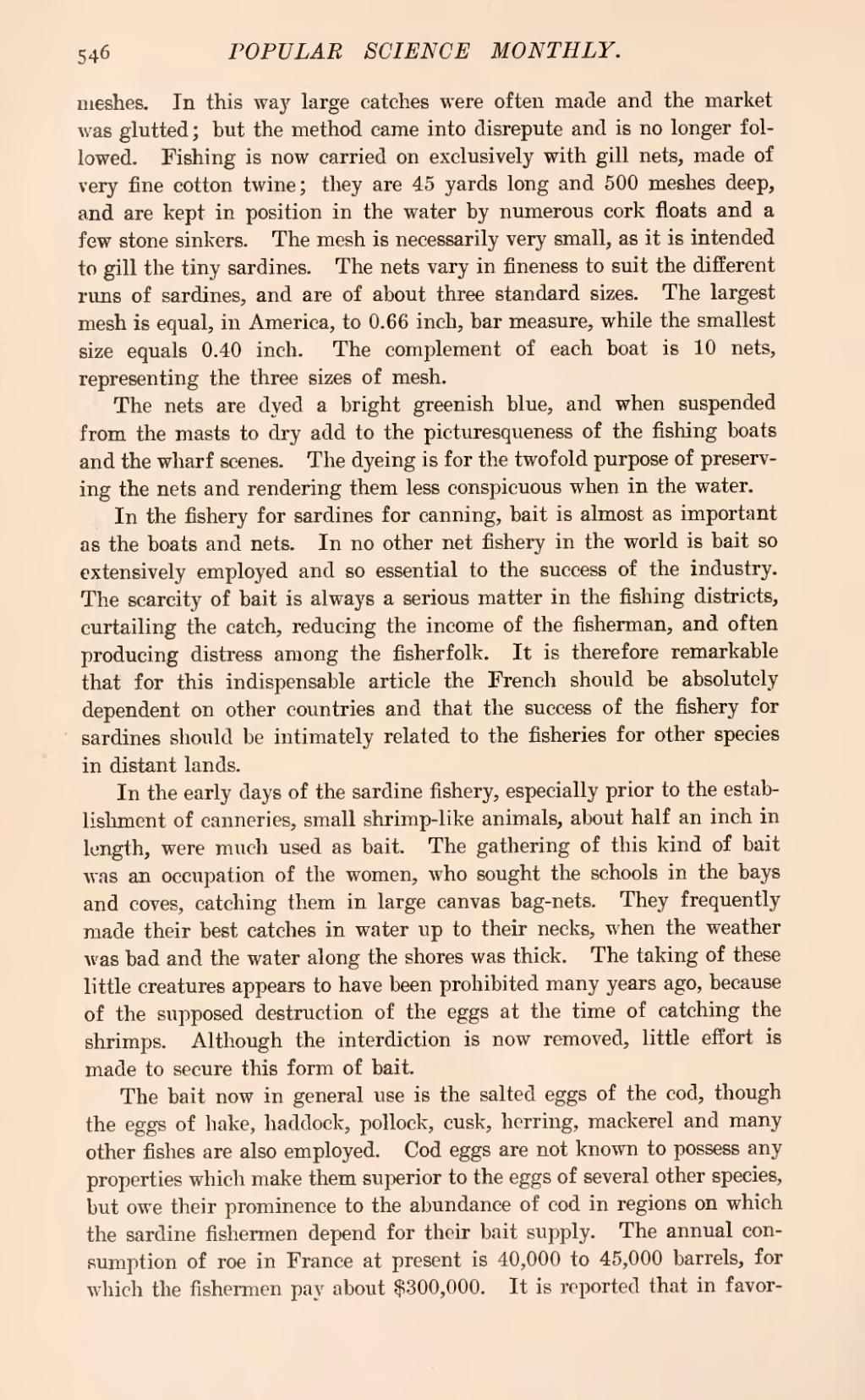meshes. In this way large catches were often made and the market was glutted; but the method came into disrepute and is no longer followed. Fishing is now carried on exclusively with gill nets, made of very fine cotton twine; they are 45 yards long and 500 meshes deep, and are kept in position in the water by numerous cork floats and a few stone sinkers. The mesh is necessarily very small, as it is intended to gill the tiny sardines. The nets vary in fineness to suit the different runs of sardines, and are of about three standard sizes. The largest mesh is equal, in America, to 0.66 inch, bar measure, while the smallest size equals 0.40 inch. The complement of each boat is 10 nets, representing the three sizes of mesh.
The nets are dyed a bright greenish blue, and when suspended from the masts to dry add to the picturesqueness of the fishing boats and the wharf scenes. The dyeing is for the twofold purpose of preserving the nets and rendering them less conspicuous when in the water.
In the fishery for sardines for canning, bait is almost as important as the boats and nets. In no other net fishery in the world is bait so extensively employed and so essential to the success of the industry. The scarcity of bait is always a serious matter in the fishing districts, curtailing the catch, reducing the income of the fisherman, and often producing distress among the fisherfolk. It is therefore remarkable that for this indispensable article the French should be absolutely dependent on other countries and that the success of the fishery for sardines should be intimately related to the fisheries for other species in distant lands.
In the early days of the sardine fishery, especially prior to the establishment of canneries, small shrimp-like animals, about half an inch in length, were much used as bait. The gathering of this kind of bait was an occupation of the women, who sought the schools in the bays and coves, catching them in large canvas bag-nets. They frequently made their best catches in water up to their necks, when the weather was bad and the water along the shores was thick. The taking of these little creatures appears to have been prohibited many years ago, because of the supposed destruction of the eggs at the time of catching the shrimps. Although the interdiction is now removed, little effort is made to secure this form of bait.
The bait now in general use is the salted eggs of the cod, though the eggs of hake, haddock, pollock, cusk, herring, mackerel and many other fishes are also employed. Cod eggs are not known to possess any properties which make them superior to the eggs of several other species, but owe their prominence to the abundance of cod in regions on which the sardine fishermen depend for their bait supply. The annual consumption of roe in France at present is 40,000 to 45,000 barrels, for which the fishermen pay about $300,000. It is reported that in favor
